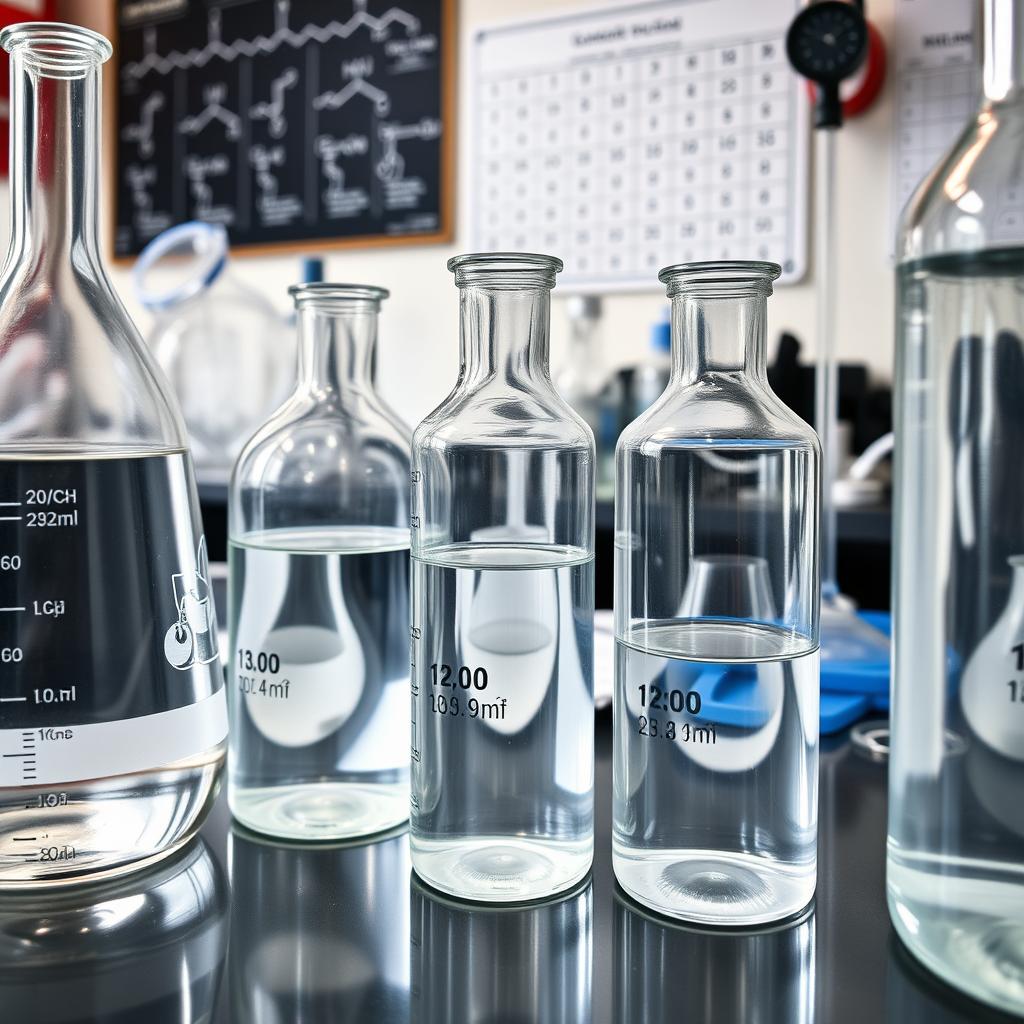Hydrochloric acid is a corrosive and toxic substance. It needs proper handling and storage. Knowing its shelf life is key for safe use. The shelf life of hydrochloric acid varies. It depends on concentration, storage, and handling. How can we extend its shelf life for safe and effective use? Hydrochloric acid is important in many industries and science. Its shelf life is crucial for its use. By understanding what affects its shelf life, we can store and handle it safely. This reduces accidents and keeps the acid quality high.
Click to buy citric acid from Silvairgroup
Key Takeaways:
- Hydrochloric acid has a limited shelf life that depends on various factors.
- Proper storage and handling practices can extend the shelf life of hydrochloric acid.
- Understanding the shelf life of hydrochloric acid is crucial for safe and effective use.
- The shelf life of hydrochloric acid can be affected by concentration, storage conditions, and handling practices.
- Regular quality checks and documentation are essential for ensuring the quality and safety of hydrochloric acid.
- The shelf life of hydrochloric acid is an important consideration in industrial and scientific applications.
Understanding Hydrochloric Acid Basics
Hydrochloric acid is a strong acid used in many fields like pharmaceuticals, food processing, and oil and gas. It’s important to know how to handle and store it safely. This knowledge helps prevent accidents and keeps the acid in good condition.
Hydrochloric acid is a colorless liquid with a strong smell. It dissolves well in water and has lots of hydrogen ions. Knowing these facts is key to storing it safely and following the right guidelines.
Chemical Composition and Properties
Hydrochloric acid has some important properties:
- High solubility in water
- High concentration of hydrogen ions
- Corrosive and toxic properties
Click to buy Citric Acid Anhydrous from Silvairgroup
Common Uses and Applications
Hydrochloric acid is used in many areas, including:
- Pharmaceuticals
- Food processing
- Oil and gas production
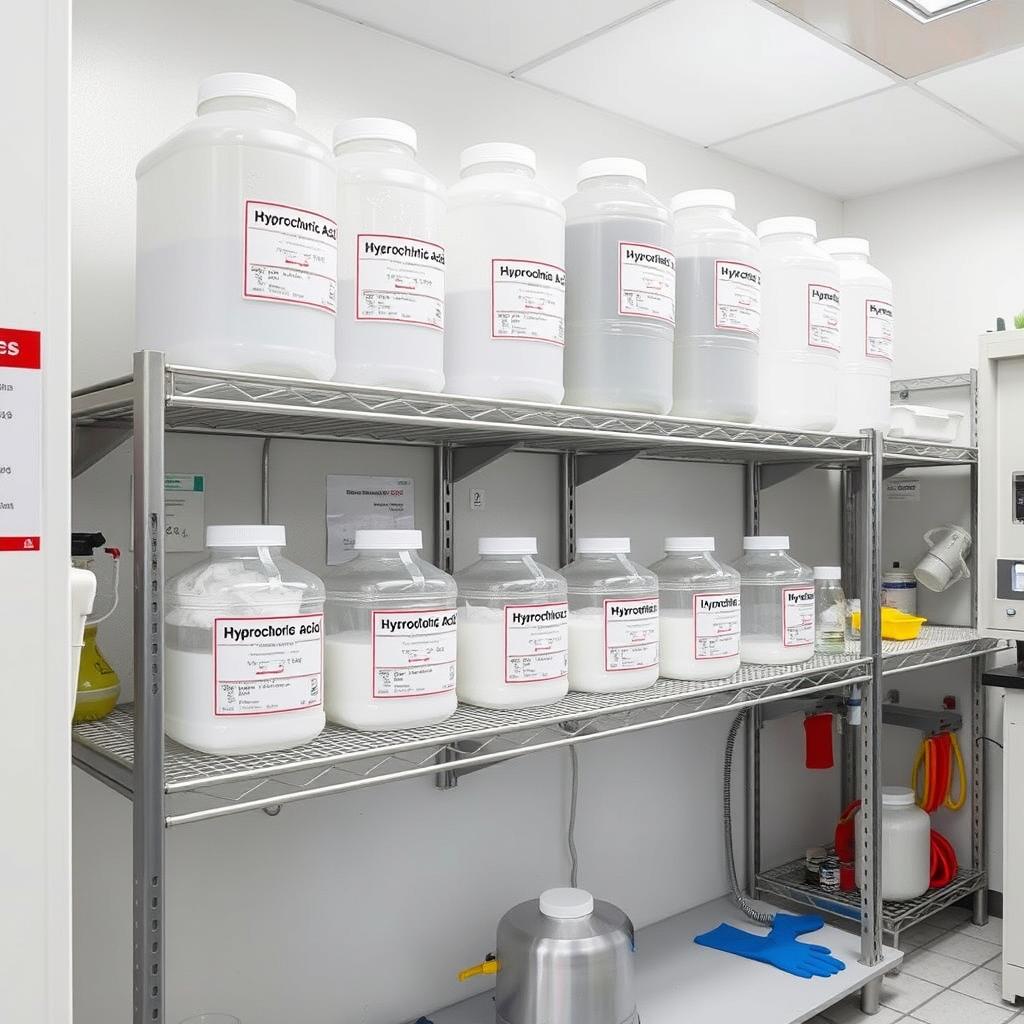
Safety Considerations
When working with hydrochloric acid, safety is crucial. Always wear protective gear and use good ventilation. Following the right storage guidelines is also essential for keeping the acid safe.
The Shelf Life of Hydrochloric Acid: Key Factors
Knowing what affects hydrochloric acid’s shelf life is key. It helps keep the acid’s quality high and ensures safety. The question of how long does hydrochloric acid last depends on several important factors. These include concentration, storage conditions, and how it’s handled.
Click to buy liquid Citric Acid from Silvairgroup
The acid’s concentration is a big factor. Higher concentrations tend to break down faster. Storage conditions, like temperature, humidity, and light, also matter a lot. How the acid is handled, from transport to storage, can also affect its shelf life. To keep hydrochloric acid fresh for longer, it’s important to consider these factors. Understanding what affects its shelf life helps users use it safely and effectively in different situations.
Some key factors to think about are:
- Concentration of the acid
- Storage conditions, such as temperature and humidity
- Handling practices, including transportation and handling
By paying attention to these factors and taking the right steps, users can extend hydrochloric acid’s shelf life. This ensures its quality and safety.
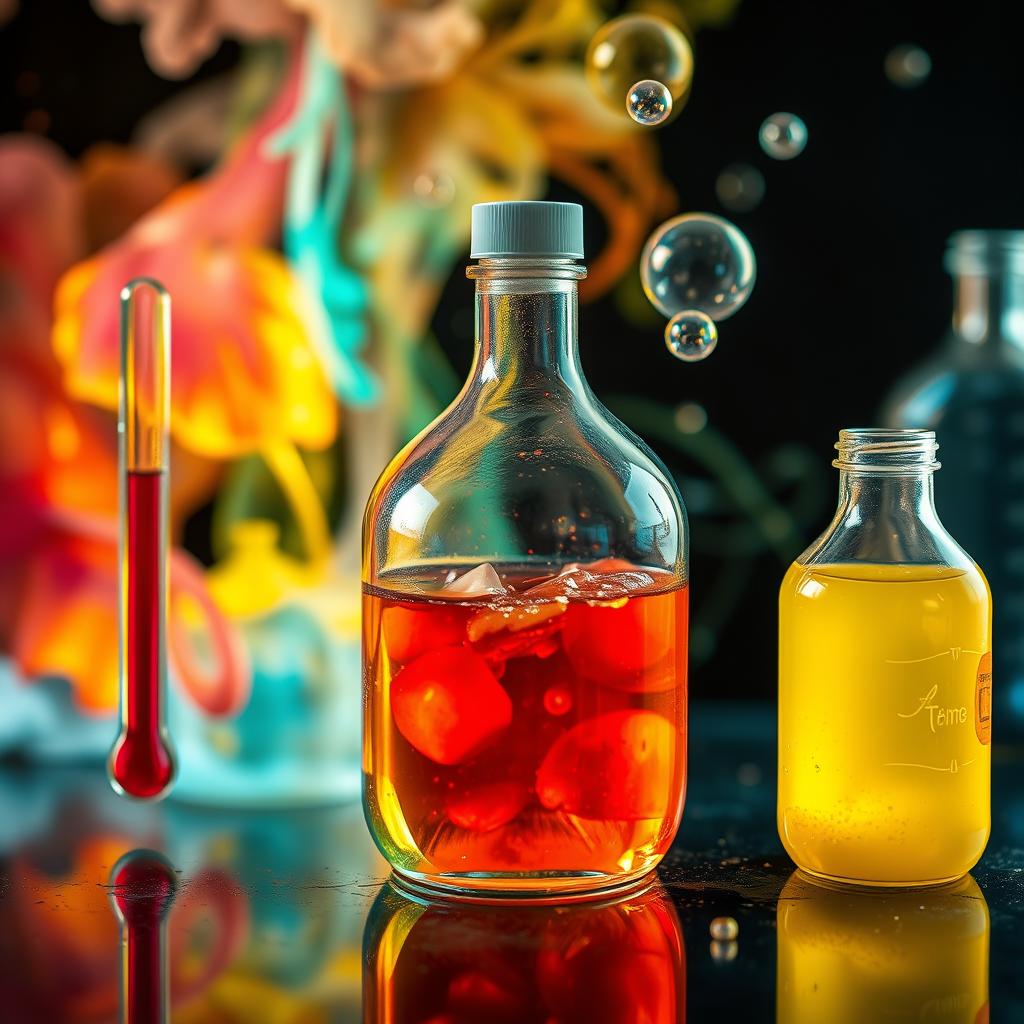
Proper Storage Conditions for Maximum Longevity
To keep hydrochloric acid fresh for a long time, follow some key steps. The right storage conditions are crucial. Keep it in a cool, dry, and well-ventilated place. Make sure it’s away from sunlight and heat. Choosing the right container is also important. Hydrochloric acid can react with some materials, like aluminum and zinc. This can cause contamination and damage. So, use containers made of safe materials, like glass or high-density polyethylene.
Temperature Requirements
The best storage temperature for hydrochloric acid is between 15°C and 25°C. Temperatures outside this range can harm its quality and stability.
Click to buy frozen a grade beluga fish from Silverigroup
Container Types and Materials
The type and material of the container are key to avoiding contamination and damage. Here are some tips for choosing the right one:
- Choose containers made of safe materials, like glass or high-density polyethylene.
- Stay away from containers made of aluminum, zinc, or other reactive materials.
- Make sure the container is tightly sealed to prevent leaks and contamination.
Environmental Considerations
Think about the environment too, like humidity and air quality. The storage area should be well-ventilated. Keep the acid away from substances that could react with it.
| Storage Condition | Recommendation |
|---|---|
| Temperature | Between 15°C and 25°C |
| Container Material | Compatible materials, such as glass or high-density polyethylene |
| Environmental Conditions | Well-ventilated, away from incompatible substances |
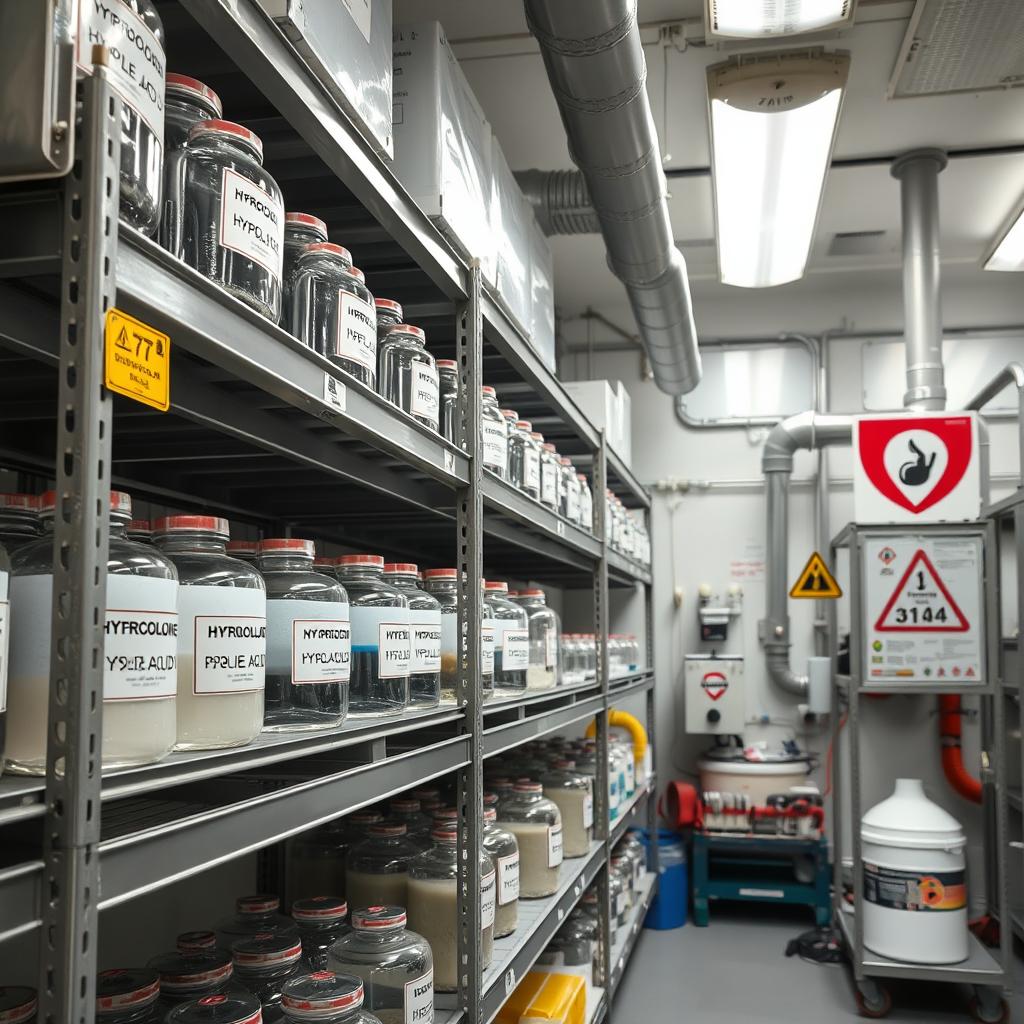
Signs of Hydrochloric Acid Degradation
Hydrochloric acid can lose quality and potency over time. This happens due to light, heat, or contaminants. It’s key to check the hydrochloric acid expiration date often.
Look out for color, odor, or consistency changes. A drop in acidity is another sign. Regular checks can spot these issues early. This way, you can keep the acid’s quality high. Maintaining hydrochloric acid quality is vital for its effectiveness and safety. Some common signs of hydrochloric acid degradation include:
- Change in color or clarity
- Unusual odor or smell
- Change in consistency or texture
- Decrease in acidity or pH level
By keeping an eye on hydrochloric acid quality and acting fast, you can ensure it stays effective and safe. Regular testing and inspections are crucial. They help prevent degradation and keep the acid in top condition.
| Sign of Degradation | Description |
|---|---|
| Change in color or clarity | The acid may become cloudy, discolored, or develop a precipitate. |
| Unusual odor or smell | The acid may emit a strong, unpleasant odor or smell. |
| Change in consistency or texture | The acid may become thicker, thinner, or develop a slimy texture. |
| Decrease in acidity or pH level | The acid may become less acidic or develop a higher pH level. |
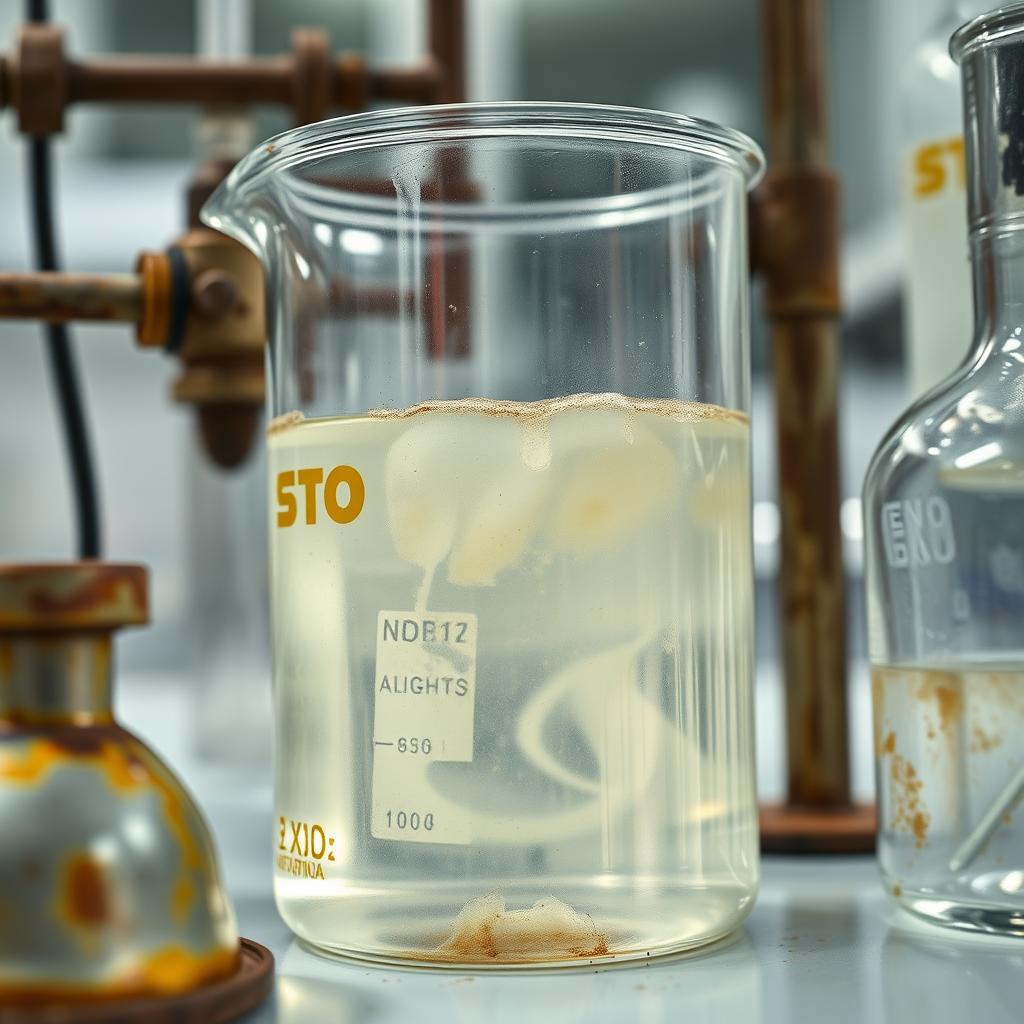
Best Practices for Maintaining Acid Quality
Keeping hydrochloric acid in good condition is important. It needs careful handling, storage, and testing. By following the right steps, you can keep the acid safe and effective.
First, handle the acid with care to avoid contamination. Always wear gloves and goggles. Use containers made of glass or plastic. It’s also key to check the acid’s quality regularly. Look for signs of degradation, like changes in color or consistency. This way, you can fix any issues before they get worse.
Handling Guidelines
- Wear protective gear, including gloves and goggles
- Use proper equipment, such as glass or plastic containers
- Handle the acid in a well-ventilated area
Regular Quality Checks
Checking the acid’s quality often is crucial. You should:
- Test for acidity and purity
- Watch for changes in color and consistency
Documentation Requirements
Keeping records is vital for tracking hydrochloric acid’s history and quality. Label and document everything. Keep a record of all quality checks and test results. This helps prevent accidents and keeps the acid safe.
| Best Practice | Description |
|---|---|
| Proper Handling | Wear protective gear, use proper equipment, and handle in a well-ventilated area |
| Regular Quality Checks | Test for acidity and purity, monitor physical properties |
| Documentation Requirements | Label and record-keep, maintain a record of quality checks and test results |

Impact of Concentration on Storage Life
The concentration of hydrochloric acid greatly affects its shelf life. Higher concentrations tend to degrade faster, leading to a shorter shelf life. Lower concentrations, however, can last longer. It’s key to understand how concentration impacts storage to handle hydrochloric acid properly.
Several factors influence hydrochloric acid’s shelf life. These include its concentration and storage conditions like temperature and humidity. To extend its shelf life, store it in a cool, dry spot, away from sunlight and moisture. Always handle it with care to avoid spills and contamination. Here are some important storage tips for hydrochloric acid:
- Concentration: Higher concentrations are more corrosive and need special care.
- Storage conditions: Keep it in a well-ventilated area, away from heat and incompatible materials.
- Handling: Use protective gear like gloves and goggles to prevent skin and eye contact.
By knowing what affects hydrochloric acid’s shelf life, you can extend it. Monitor its concentration, store it properly, and handle it carefully. Regular checks can also spot any degradation or contamination early on. Understanding the impact of concentration on storage is crucial for hydrochloric acid users. By following proper storage and handling, you can extend its shelf life. This ensures safe and effective use of the acid.
| Concentration of Hydrochloric Acid | Shelf Life |
|---|---|
| High concentration (35-40%) | Shorter shelf life (6-12 months) |
| Low concentration (10-20%) | Longer shelf life (1-2 years) |
Industrial vs Laboratory Storage Requirements
Storing hydrochloric acid safely is different in industrial and lab settings. It’s important to know these differences to handle the acid safely. In industries, big tanks are used for storing large amounts of acid. Labs, however, use smaller containers and special equipment for handling smaller amounts. Keeping hydrochloric acid safe in both places requires careful thought. Temperature control and environmental considerations are key. Here are some important factors to remember:
- Container material and compatibility
- Storage location and accessibility
- Labeling and signage for easy identification
In labs, the rules for storing hydrochloric acid are stricter because of the small amounts and need for precision. Labs use secondary containment and ventilation systems to prevent accidents. Following these rules helps keep the acid safe and effective. The main thing is to understand and follow the right storage rules for each place. This way, people can avoid risks and keep their work areas safe.
Common Storage Mistakes to Avoid
Storing hydrochloric acid right is key to keeping it from degrading or getting contaminated. To make it last longer, you need to pick the right container and control the environment. Mistakes in storage can really harm the acid’s quality. Knowing what not to do is important. Mistakes fall into three main areas: picking the wrong container, not controlling the environment, and mishandling. By avoiding these, you can keep the acid in top shape.
Container Selection Errors
Using the wrong container can cause the acid to react and degrade. For example, a container that reacts with the acid can contaminate it. It’s crucial to choose a container that’s safe for the acid.
Environmental Control Issues
Changes in temperature and humidity can hurt the acid’s quality. Not controlling these can lead to degradation. By following the right steps, you can keep the acid safe from these issues.
Handling Mishaps
Accidents like spills can contaminate the acid. It’s important to handle it carefully to avoid these problems. This way, you can keep the acid safe and make it last longer.

Emergency Procedures and Safety Protocols
When working with hydrochloric acid, it’s vital to have emergency plans and safety rules. Knowing the hydrochloric acid’s expiration date and keeping its quality high is key to avoid accidents. If there’s a spill, having a plan to reduce exposure and prevent contamination is important.
Some key steps for emergency procedures are:
- Evacuation procedures in case of a large spill or leak
- First aid measures for skin and eye exposure
- Proper cleanup and disposal of spilled hydrochloric acid
To prevent accidents, safety protocols should be in place. This includes wearing protective gear like gloves, goggles, and a face mask. Regular checks should also be done to ensure the hydrochloric acid is good quality and within its expiration date.
As OSHA guidelines say, “employers must provide a safe working environment for their employees.” This means giving proper training on handling hydrochloric acid and setting up emergency plans and safety rules. By following these steps and keeping the hydrochloric acid quality high, the risk of accidents and exposure can be lowered.
Having a plan and following safety rules can reduce the risks of working with hydrochloric acid. It’s crucial to remember that keeping the hydrochloric acid quality up and knowing its expiration date are key parts of safe handling.
| Emergency Procedure | Safety Protocol |
|---|---|
| Evacuation | Wearing protective gear |
| First aid | Regular quality checks |
| Cleanup and disposal | Proper training |
Conclusion: Ensuring Long-Term Hydrochloric Acid Stability
Keeping the shelf life of hydrochloric acid safe is key for its use in many fields. By following the tips in this article, experts can keep this important chemical in top shape. The right storage conditions, regular checks, and safety rules are essential for its long-term stability. With careful handling, you can extend the life of this useful substance. This ensures it works well for you. By following these steps, you protect hydrochloric acid and make the most of it in your work.
FAQ: What is the Shelf Life of Hydrochloric Acid?
What is the shelf life of hydrochloric acid?
Hydrochloric acid’s shelf life depends on several factors. These include concentration, storage conditions, and handling practices. With proper care, it can last for years.
How can I properly store hydrochloric acid to extend its shelf life?
Store hydrochloric acid in a cool, dry place. Keep it away from sunlight and heat. The best temperature is between 15°C and 25°C. Use containers made of polyethylene or glass. This prevents corrosion and keeps the acid fresh.
What are the signs of hydrochloric acid degradation?
Look for color, odor, or consistency changes. A decrease in acidity is also a sign. Regularly test the acid to ensure it’s good.
How does the concentration of hydrochloric acid affect its shelf life?
Concentration greatly affects shelf life. Higher concentrations degrade faster, leading to a shorter shelf life. Lower concentrations last longer.
What are the differences in storage requirements for industrial and laboratory settings?
Industrial settings use large tanks and containers. Laboratories need smaller containers and special storage for safe handling.
What are some common storage mistakes to avoid with hydrochloric acid?
Avoid using the wrong containers and neglecting environmental controls. Mishandling can cause spills and contamination. Always follow safety protocols.
What emergency procedures and safety protocols should be in place for hydrochloric acid?
Have emergency plans and safety protocols ready. This includes evacuation plans and first aid training. Make sure everyone wears proper PPE when handling the acid.

